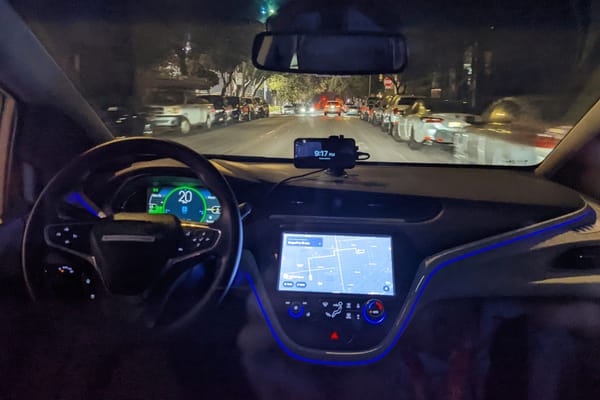During Pride Week in San Francisco, technological progress came to a standstill. “RoboTaxis,” self-driving cars used by ride-hailing firms such as Waymo and Cruise, encountered parade roadblocks and stalled out, blocking emergency and other vehicles. This impasse revealed a basic truth: Automation, which has been promoted as a way to make driving safer, carries with it much in the way of unacknowledged risk.
This year, a trucker friend of mine dropped off his big rig for repairs and drove home in a rental car. “I had the cruise set,” he told me, “and everything was fine—until I saw the remains of a blown tire in the middle of my lane. When I tried to steer the car into the shoulder, it fought me, as if it didn’t want to let me avoid the tire.” Automated lane control isn’t yet federally mandated. But in June, the National Highway Traffic Safety Administration proposed that automatic emergency braking be required in all passenger vehicles and light trucks. The agency estimated that the mandate would save 360 lives annually. Do those estimates account for malfunctions in which the braking system engages and causes a problem, rather than avoiding one, or the false sense of safety that some people might feel, leading to distraction and more prevalent risk-taking? Plus, there is the increased cost of buying an automobile that would likely result from the mandated complexity.
The political philosopher Matthew Crawford has warned for years about the way that automation can make us less human. His 2020 book, Why We Drive, is a stirring defense of the human need for interaction with material reality, as exemplified in the operation of cars and motorcycles. It extends the argument of his two previous books, Shopclass as Soulcraft (2009) and The World Beyond Your Head (2015).
One of the motives for the push to automate driving, Crawford writes, is to take the driver’s attention away from the road so that it can be devoted to the ceaseless demands of marketers. One car described by Crawford, the Volvo Concept 26, offers different cabin configurations, including a “create” mode and a “relax” mode. The idea is that the driver will be freed to engage in higher functions than mere driving, but it seems more likely that he will spend this time “irritably sifting through offers of various products and services tailored to his creative lifestyle and to his intended destination.”
